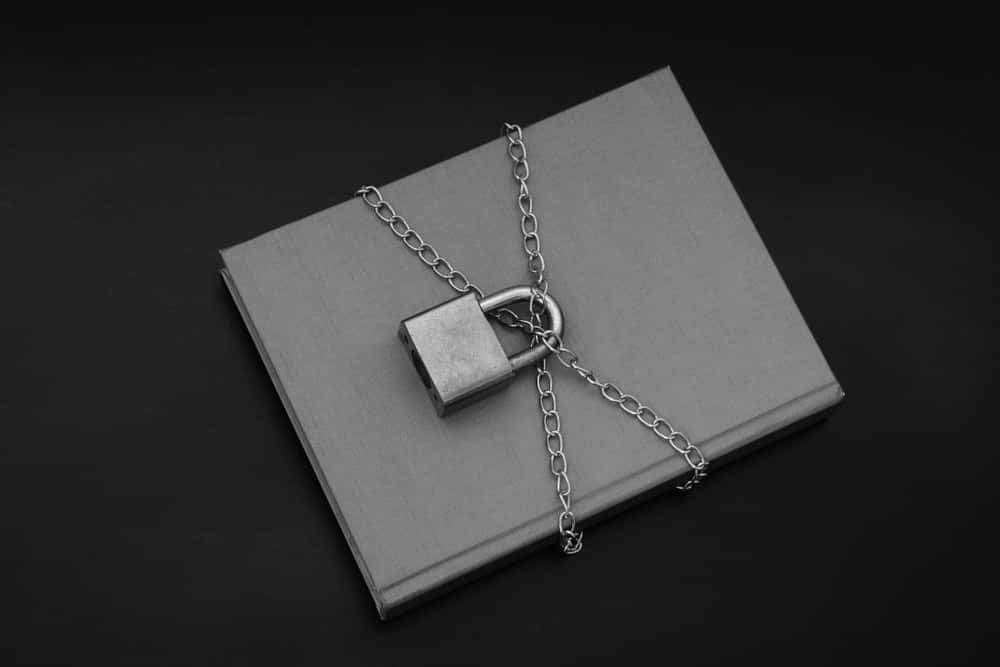The middle child in a famously talented family, Fanny Burney overcame some early obstacles to become one of the most important novelists in English history. And life gave her much to observe, taking her from rural England to the palace of King George III to the tumult of Napoleonic France; all passed through Fanny Burney’s sharp eye. Here are 42 novel facts about Fanny Burney.
1. Speaking in Tongues
Frances Burney was born in Lynn Regis, England, in 1752. “Fanny” grew up in a creative household. She and her six siblings were trained in a variety of musical instruments (including violin and organ), enjoyed acting and putting on plays, and even developed a coded language which they used amongst themselves.

2. The Burney Bunch
Burney’s mother, Esther Sleepe, passed on when Burney was only 10 years old. Burney’s father remarried a few years later. Her stepmother, Elizabeth Allen, was the daughter of a wealthy wine merchant, and brought with her three children of her own. The Burney children did not get along with these step-siblings.
3. Home to Genius
Burney’s childhood home had once belonged to Sir Isaac Newton.
4. High Society
Burney’s father was a renowned composer and musical historian. Charles Burney was a member of the Royal Society whose social circle included such well-known writers and artists as Samuel Johnson, Richard Brinsley Sheridan, and Edmund Burke.
5. Running Start
Fanny struggled with her education. She didn’t learn the alphabet until she was nearly 10, leaving her parents to suspect she was dyslexic. That one small step might have been all Fanny needed, however: she began writing stories, poems, and plays as soon as she figured out the letters.
6. Dear Miss Nobody
Around this time, Fanny began keeping a diary. Her entries took the form of letters, addressed to “Miss Nobody". Fanny Burney would continue to write these diary entries for the next 72 years.
7. My Two Dads
Burney grew up in a restrictive society that didn't believe women should, or could, be writers. Not everyone opposed women’s writing, however. A friend of Charles Burney’s, a playwright named Samuel Crisp, discovered and encouraged Fanny’s writing. Fanny and Crisp were very close, with Fanny often referring to him as “Daddy Crisp".
8. A Young Lady’s Entrance Into the World
Encouraged by the support of Crisp and Susan, Burney wrote her first published novel, Evelina, or the History of a Young Lady’s Entrance into the World. Evelina borrowed heavily from The History of Caroline Evelyn and tells the story of a young country girl who discovers she is the daughter of an English aristocrat and enters into London society.
9. Woman of Letters
Evelina, published in three volumes by Thomas Lowndes of London, is an epistolary novel—that is, the story is told through a series of letters between characters. It was a form Burney was extremely comfortable with, as demonstrated by both her diary entries to “Miss Nobody” and her ever-expanding group of pen pals.

History's most fascinating stories and darkest secrets, delivered to your inbox daily.
10. Seal of Approval
Though epistolary novels were the subject of much criticism and parody, they were an extremely popular genre. Evelina was in instant success, however. Not only did it demand the release of four editions in rapid succession, it also received praise from such respected critics as Edmund Burke and Samuel Johnson. Even Charles Burney had to admit he liked it, though he had no idea his daughter was the author.
11. Secret Identity
Evelina had been published anonymously, both to protect Burney’s reputation and to help sales—novels by women faced harsher criticism and weaker sales. The author of Evelina was revealed in “Warley: A Satire,” a satirical poem by William Huddesford.
12. A Vile Poem
While many of Burney’s friends knew her as the author of Evelina, Burney had guarded her anonymity from the public, going so far as to construct a number of disguises and aliases to use when meeting with publishers. She referred to “Warley: A Satire” as “a vile poem,” and, according to her husband, would become visibly upset whenever it was mentioned.
13. Glass Houses
On top of it all, “Warley: A Satire” was published anonymously.
14. Wit-less
Burney’s next work was a comedic play called The Witlings, about a couple kept apart by “economic insufficiency". Both Charles Burney and Samuel Crisp discouraged Burney from producing the play, and it was shelved.
 Shutterstock
Shutterstock
15. Production Delays
The Witlings finally took the stage in 1998. It premiered, 219 years after it was first written, at the Main Street Theatre in Houston, Texas.
16. Familiar Faces
The main character of The Witlings was named Cecilia. It seems likely that this character was repurposed for Burney’s next novel, Cecilia, or Memoirs of an Heiress. Like Evelina, Cecilia tells the story of a young woman trying to navigate London society.
17. Writer’s Retreat
Burney wrote Cecilia at Samuel Crisp’s house. The Burney household proved too stressful—Charles Burney was working on a book of his own—so Burney moved in with Crisp for six months to complete her novel.
18. International Best Seller
Cecilia proved even more popular than Evelina. It went through 27 editions in Burney’s own lifetime (and 51 since its original publication), and international editions in more than 25 countries, including Germany, Russia, and the United States.
19. A Great Tragedy
After the success of her first two novels, Burney devoted much of her attention to writing plays, which generally paid better. Burney wrote eight plays, perfectly divided between satires and verse tragedies. Only the tragedies would be produced in her lifetime.
20. Francophile
Around this time, Burney also took a keen interest in the political goings-on in France. The French Revolution was coming to an end, and England became home to many French immigrants. The connection to France was deeply personal for Burney, whose maternal grandfather had himself been a French refugee.
21. Le Marriage
At 41, Burney married a French general, Alexandre D’Arblay. D’Arblay had been active in the French Revolution before immigrating to England, and he didn’t have much money. Furthermore, he was Catholic. Charles Burney did not approve the union, despite the fact that Fanny’s mother had been a Catholic.
 Getty Images
Getty Images
22. Independent Woman
Burney’s marriage came relatively late, but it had seemed unlikely that she would marry at all. She had turned down proposals before. At 22, she had written in her diary, “[I have] no idea why the single Life may not be happy. Liberty is not without its value—with women as well as men".
23. Cottage Industry
Burney’s writings provided the primary income for the newly-wed couple and their newborn son Alexander. Her third novel, Camilla, or, a Picture of Youth, was published in 1796 and earned enough money for her and D’Arblay to build a small home in Surrey. They called the home “Camilla Cottage".
 Wikimedia Commons, Ian Capper / Plaque on the gateway to Camilla Drive / CC BY-SA 2.0
Wikimedia Commons, Ian Capper / Plaque on the gateway to Camilla Drive / CC BY-SA 2.0
24. By Any Other Name
Burney had originally planned to name the protagonist of her third novel “Ariella". Her brother disliked the name, and Burney changed it to “Clarinda” briefly, before finally settling on “Camilla".
25. Playing Favorites
Fanny Burney’s half-sister Sarah was also a novelist, but did not reach the same heights. This may have been because of Sarah’s strained relationship with their father. Charles Burney ensured Fanny had a steady income and promoted her books heavily in London circles. He was less generous with Sarah, even though she had worked as both his nurse and secretary.
26. A Helping Hand
Fanny recognized the inequality and did what she could to support Sarah, both financially and creatively. When Fanny died, she left £1000 to Sarah in her will—that’s roughly the equivalent to $37,600 today.
27. France’s Burney
In 1801, Alexandre D’Arblay was offered a role in the government of Napoleon and moved the family to a small town just outside of Paris. A war broke out between England and France almost immediately after they arrived, and Burney found herself exiled in France for the next decade.
28. Going Home
In 1812, Burney and her son set out for the United States—or so they claimed. In reality, Burney returned to England to care for her dying father, and to prevent young Alexander from being drafted into the French army. Burney returned to France following her father’s death.
29. Bath Time
When Napoleon was deposed, D’Arblay crossed the floor in support of King Louis XVIII. When Napoleon returned to power the following year, he and Burney returned to England, settling in Bath, 100 miles west of London. Burney would remain in the city for the rest of her life.
30. Based on a True Story
Burney published her final novel, The Wanderer; or, Female Difficulties, in 1814. An early example of a historical novel, The Wanderer drew on Burney’s own experiences to tell the story of a woman who escapes France during the Reign of Terror.
31. Contraband
It took Burney 14 years to write The Wanderer. All that work almost would have been for nothing. Upon her return to England, Burney’s shipped docked illegally and was placed under the custody of English authorities. Customs agents then tried to seize Burney’s manuscript; they accused her of being a spy and threatened to destroy the manuscript, but finally relented after an English merchant vouched for her.
32. Difficult Reading
The Wanderer received harsh criticism in comparison to Burney’s previous novels. Critics did not respond positively to the feminist themes of the novel, or the critiques of English society. One noted critic, William Hazlitt, wrote the conflicts of the novel were “indeed ‘female difficulties’—they are difficulties created out of nothing".
33. Lost in Translation
Sadly, even Burney had negative things to say about the novel. She was dissatisfied with the French translation, La Femme errante, going so far as to call it “abominable". The Wanderer fell quickly out of print and would not be released again until 1988.
34. Agony Aunt
Burney is not to be confused with her niece, the playwright Frances Burney, who also lived in Bath. Despite living in the same city, and sharing an occupation, the two were not especially close.
35. Her Biggest Fan
Burney had a profound influence on another young writer from Bath, Jane Austen, whose novel Pride and Prejudice takes its title from a line in Burney’s novel Cecilia. Austen also alludes to Camilla in her novel Northanger Abbey.
36. Black Sheep
Despite her father’s high standing among the English intelligentsia, Fanny received no formal education. Those advantages were granted to Fanny’s older sisters, Esther and Susanna, in whom Charles Burney perceived “superior attractiveness and intelligence".
37. Invisible Ink
As a child, Burney read and wrote voraciously, but she had to do so in secret. Again, English society was not charitable to young female writers, especially those who wrote novels, which were deemed trivial, subversive, or even dangerous to one’s health. Burney wrote her first novel, The History of Caroline Evelyn, when she was just 15.
However, she immediately threw it in the fire for fear of being found out.
38. Fanny Burn-y
Fanny’s sister, Susan, had been privy to Fanny’s writings. She watched as Fanny burned the novel, weeping bitterly and pleading with her to stop.
39. Her Day in Court
From 1786 to 1790, Burney served as Keeper of the Robes to Charlotte, Queen consort of Great Britain and Ireland. It was a high- status appointment which put her in daily contact with the royal family, but Burney did not enjoy her time there: the king had fallen into mental illness, which placed great strain on the queen and made her extremely temperamental. Her father was eventually able to secure her release, but she continued to receive a £100-a-year pension.
40. The Royal Mail
During her time as Keeper of the Robes, Burney did strike up a friendship with the princesses, adding them to her list of frequent correspondents.
41. Medical History
In 1810, Burney was diagnosed with skin cancer. The following year, she underwent a mastectomy to help combat the disease. These were the days before anesthetic. A letter to her sister describing the ordeal, now held at the British Library, is considered one of the most vivid and reliable depictions of surgery in the pre-anaesthetic era.
As she wrote, : "My dearest Esther, & all my dears . . . will rejoice to hear that the resolution once taken, was firmly adhered to, in defiance of a terror that surpasses all description . . . — when the dreadful steel was plunged into . . . I needed no injunctions not to restrain my cries. I began a scream that lasted unintermittingly during the whole time of the incision — & I almost marvel that it rings not in my ears still!"
To say the least: Ouch.
42. The Last Chapter
Burney barely published after the failure of The Wanderer. Her final book, a commentary edition of her father’s memoirs, was published in 1832. She passed away in 1840.
 Shutterstock
Shutterstock














































